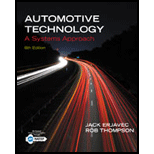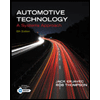
Automotive Technology: A Systems Approach (MindTap Course List)
6th Edition
ISBN: 9781133612315
Author: Jack Erjavec, Rob Thompson
Publisher: Cengage Learning
expand_more
expand_more
format_list_bulleted
Concept explainers
Textbook Question
Chapter 38, Problem 6RQ
True or False? In most transmissions and transaxles, there is one synchronizer assembly for each speed gear.
Expert Solution & Answer
Trending nowThis is a popular solution!

Students have asked these similar questions
True or False? In most transmissions and transaxles,there is one synchronizer assembly for each speedgear
On an electronically controlled transmission list 5 things that could cause incorrect shift times and poor shifting quality
What can too much clutch pedal free play cause?
a.hard gear shifting
b.fast release bearing wear
c.release fork wear
d.clutch slipping
Chapter 38 Solutions
Automotive Technology: A Systems Approach (MindTap Course List)
Ch. 38 - What determines whether a conventional...Ch. 38 - Name the three drive configurations that a gearset...Ch. 38 - True or False? A reverse idler gear changes the...Ch. 38 - Define the purpose of the final drive gears.Ch. 38 - Explain the role of shift rails and shift forks in...Ch. 38 - True or False? In most transmissions and...Ch. 38 - The number of gear teeth per unit of measurement...Ch. 38 - Which of the following gear ratios indicates an...Ch. 38 - Which type of gear develops gear whine at high...Ch. 38 - When an idler gear is placed between the driving...
Ch. 38 - The component used to ensure that the mainshaft...Ch. 38 - In a transaxle, the pinion gear on the pinion...Ch. 38 - True or False? The cone on a synchronizers...Ch. 38 - Which of the following gear ratios provides the...Ch. 38 - What does a shift blocking system do, and how does...Ch. 38 - Technician A says that most transaxles have a...Ch. 38 - While discussing the various types of...Ch. 38 - Technician A says that the countergear or cluster...Ch. 38 - Technician A says that reverse lamp switches are...Ch. 38 - Technician A says that if a single idler gear is...Ch. 38 - Technician A says that in a conventional...Ch. 38 - While discussing the power flow through a...Ch. 38 - Prob. 8ASRQCh. 38 - Prob. 9ASRQCh. 38 - While discussing shift mechanisms: Technician A...
Knowledge Booster
Learn more about
Need a deep-dive on the concept behind this application? Look no further. Learn more about this topic, mechanical-engineering and related others by exploring similar questions and additional content below.Similar questions
- Technician A says that in a conventional transmission, the speed gears freewheel around the mainshaft until they are locked to it by the appropriate synchronizer. Technician B says that speed gears are an integral part of the countershaft assembly. Who is correct? a. Technician A only b. Technician B only c. Both A and B d. Neither A nor Barrow_forwardWhich of the following gear ratios indicates an over-drive condition? a. 2.15:1 b. 1:1 c. 0.85:1 d. None of the abovearrow_forwardWhile discussing shift mechanisms: Technician A says that the interlock notches hold the transmission in the selected gear. Technician B says that the detent notches prevent the selection of more than one gear during operation. Who is correct? a. Technician A only b. Technician B only c. Both A and B d. Neither A nor Barrow_forward
- Technician A says that when a car is moving straight ahead, all differential gears rotate as a unit. Technician B says that when a car is turning a corner, the inside differential side gear rotates slowly on the pinion, causing the outside side gear to rotate faster. Who is correct? a. Technician A only b. Technician B only c. Both A and B d. Neither A nor Barrow_forwardTrue or False? The cone on a synchronizers blocking ring serves as a cone-clutch assembly during the changing of gears.arrow_forwardTrue or False? A reverse idler gear changes the direction of torque flow to the opposite direction of engine rotation.arrow_forward
- Technician A says that if the shift for all forward gears is delayed, a slipping forward clutch is normally indicated. Technician B says that a bad forward clutch is indicated when there is a slip when the transmission shifts into any forward gear. Who is correct? a. Technician A only b. Technician B only c. Both A and B d. Neither A nor Barrow_forwardA car jumps out of gear into neutral, particularly when decelerating or going down hills: Technician A checks the shift lever and external gearshift linkage first. Technician B says that the clutch pilot bearing could be the problem. Who is correct? a. Technician A only b. Technician B only c. Both A and B d. Neither A nor Barrow_forwardWhich of the following is a probable cause for a converters stall speed being below specifications? a. Restricted exhaust b. Slipping transmission clutches c. Slipping transmission bands d. Worn planetary gearsetarrow_forward
- Which of the following is the most likely cause for a shudder during the engagement of a lock-up torque converter? a. A bad converter b. Worn or damaged CV or U-joints c. A worn front planetary gearset d. Loose flexplatearrow_forwardWhen a transmission is described as having two planetary gearsets in tandem, what does this mean?arrow_forwardWhich type of transmission uses pulleys to change engine speed? Dual-dutch Manual Continuously varaible Automaticarrow_forward
arrow_back_ios
SEE MORE QUESTIONS
arrow_forward_ios
Recommended textbooks for you
 Automotive Technology: A Systems Approach (MindTa...Mechanical EngineeringISBN:9781133612315Author:Jack Erjavec, Rob ThompsonPublisher:Cengage Learning
Automotive Technology: A Systems Approach (MindTa...Mechanical EngineeringISBN:9781133612315Author:Jack Erjavec, Rob ThompsonPublisher:Cengage Learning Automotive TechnologyMechanical EngineeringISBN:9781337794213Author:ERJAVEC, Jack.Publisher:Cengage,
Automotive TechnologyMechanical EngineeringISBN:9781337794213Author:ERJAVEC, Jack.Publisher:Cengage,

Automotive Technology: A Systems Approach (MindTa...
Mechanical Engineering
ISBN:9781133612315
Author:Jack Erjavec, Rob Thompson
Publisher:Cengage Learning

Automotive Technology
Mechanical Engineering
ISBN:9781337794213
Author:ERJAVEC, Jack.
Publisher:Cengage,
Mechanical Design (Machine Design) Clutches, Brakes and Flywheels Intro (S20 ME470 Class 15); Author: Professor Ted Diehl;https://www.youtube.com/watch?v=eMvbePrsT34;License: Standard Youtube License